Grewia rogersii
Grewia rogersii Burtt Davy & Greenway
Family: Malvaceae
Common names: Waterberg raisin (Eng.); Waterberg-rosyntjie (Afr.); mulembu (Tshivenda)
SA Tree No: 463.7
Introduction
The Waterberg raisin is a bushy shrub with attractive dark green and whitish bicoloured foliage, star shaped yellow flowers in summer and 4-lobed berry-like fruits covered with star-like fuzz. It is a rare endemic from the Waterberg where it grows on rocky hillsides.
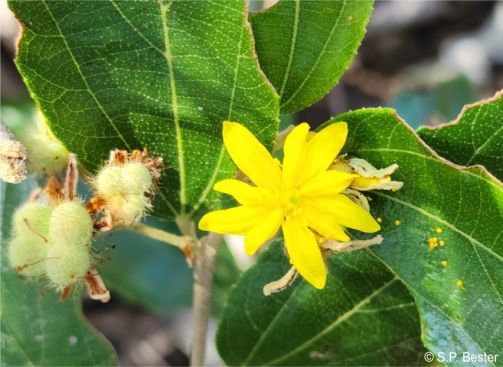
Description
Description
Grewia rogersii is a compact spreading shrub, reaching up to 5 m high, with young branches initially covered in brown hairs that later become smooth, with purplish-brown bark. Leaves, measuring 70 x 37 mm, with a pointed or rounded tip, a rounded and sometimes asymmetric base, serrated edges, and a shiny dark green colour (bronze when dried), sparsely covered in tiny hairs on the upper surface and whitish or very pale brownish and tomentose underneath, with prominent veins. The petioles, up to 5 mm long, and stipules, up to 6 mm long, are both covered in whitish or brownish hairs. The inflorescences typically appear in the axils and usually bear 3 flowers each, with hairy peduncles and pedicels, while the bracts are not easily visible. The sepals, about 9 x 1.5 mm, are linear-oblong, hairy on the outside, and 3-nerved, but smooth on the inside. The yellow petals, roughly equal in length to the sepals, with a narrow, nectar-producing base, not wider than the blade base, and sparsely hairy on the inside. The androgynophore has a glabrous base and a slightly hairy apex but is not significantly extended beyond the glabrous base. The ovary is 4-lobed and densely hairy, while the style, measuring 3-5 mm long, is smooth, and the stigma lobes are broad. The fruit, when slightly immature, measures 9 mm in diameter, is deeply 4-lobed, and covered in short fuzz with longer brownish hairs. Flowering is in early summer, October to January.
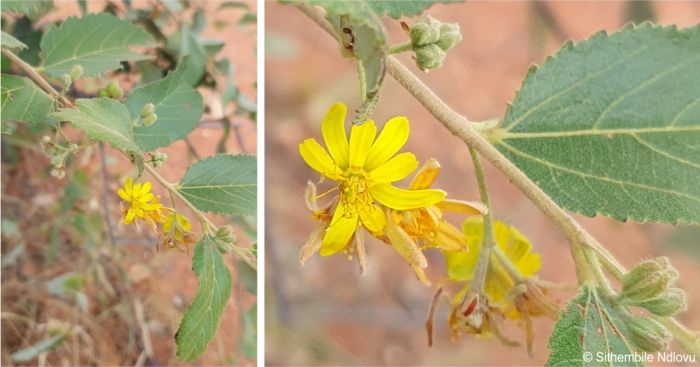
Conservation Status
Status
The conservation status of Grewia rogersii is Least Concern (LC) according to the Red List of South African plants, meaning it is not under threat in its natural habitat.
Distribution and habitat
Distribution description
Grewia rogersii is endemic to the Waterberg District, Limpopo Province, in the northern parts of South Africa. It grows in savanna on rocky hillsides, at altitudes from 830 to ±1 600 m above sea level, with a stable population in the vegetation type Waterberg Mountain Bushveld.
Derivation of name and historical aspects
History
This species is named after Archdeacon Frederick Arundel Rogers (1876–1944), an English missionary and collector of over 24 000 plant specimens. Rogers collected the type specimen used by the botanist Joseph Burtt Davy to describe the species in 1926. The genus name Grewia was designated by Carl Linnaeus as a tribute to the English botanist Nehemiah Grew (1641-1712). Grew was renowned as one of the foremost plant anatomists and microscope investigators of his era, and his investigations into pollen formed the basis for contemporary palynology. Grew is known as the father of plant anatomy his popular work was naming the parts of a flower distinguishing male and female organs.
The genus Grewia was previously placed in the family Tiliaceae, but this family has been sunk into family Malvaceae and its former members are now placed mostly within the subfamilies Tilioideae, Brownlowioideae and Grewioideae. Malvaceae, commonly known as the mallow family, is a big family with about 244 genera and 4 225 recorded species. Some members of this family are well known for their economic importance, like cotton, cacao, and okra while others are known for their cultural use, ecological importance and overall beauty, like hibiscus and baobab trees.
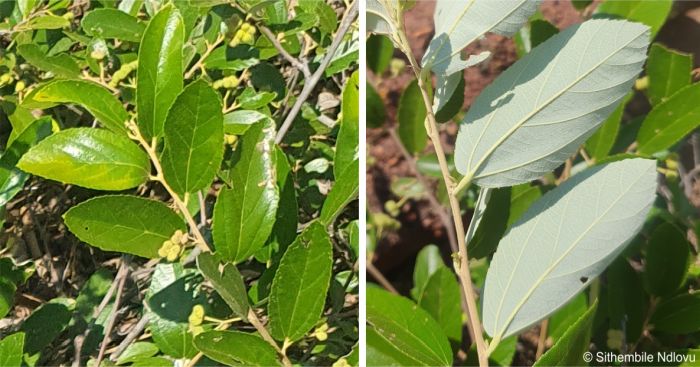
Ecology
Ecology
There are numerous kinds of lepidopteran caterpillars whose diets revolve around Grewia species. The leaves of many species of Grewia are browsed by game and stock. The fruits are eaten by birds, that then disperse the seeds.
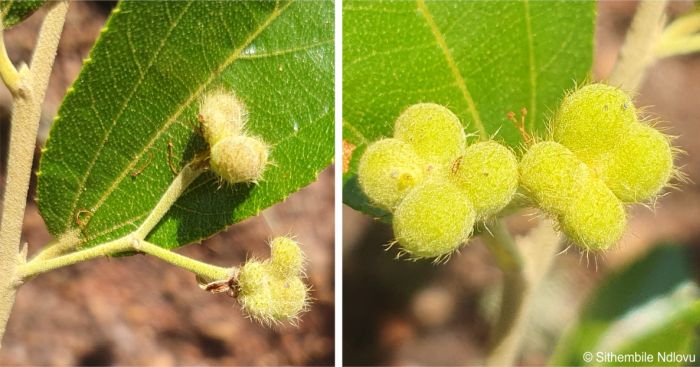
Uses
Use
There are no records of how Grewia rogersii is utilized by people but it is possible it can be used in a similar way to other species that have many uses. Known uses for species of Grewia include: fresh leaves which are cooked and eaten with porridge; fruits that are eaten fresh or dried, or used to make beverages; wood that is used to make hunting bows, sticks, spears and poles, and in hut-building, and for firewood; bark that is used for cordage; roots and bark that are used in traditional medicine.
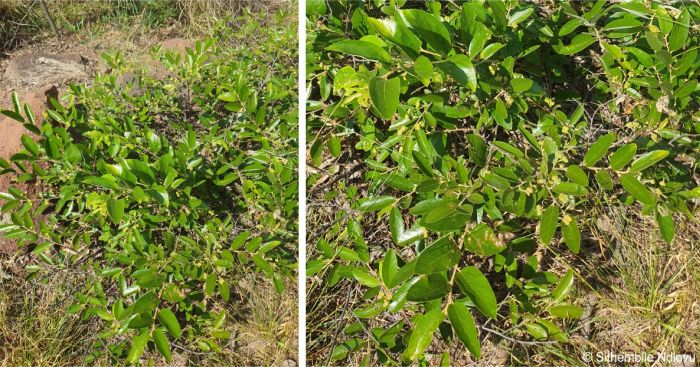
Growing Grewia rogersii
Grow
Grewia species can be cultivated successfully in various soil types, from sandy to loamy, as long as it is well-drained, in full sun or partial shade. Grewia rogersii requires water in summer, moderate watering during the dry winter season and occasional applications of fertilizer to promote growth and abundant flowering in cultivation.
Grewia rogersii can be propagated using seeds from ripe fruit, stem cuttings, and layering. Seeds are sown in spring or summer in free-draining soil, kept consistently moist until germination. Stem cuttings and layering are successful when taken during active growth, treated with rooting hormone and rooted in a suitable growing medium. Grewia rogersii would make a good ornamental plant in gardens and landscapes with its attractive foliage and flowers. It is suitable for gardens of any size, as a hedge or against a wall and is ideally suited for bushveld and grassland gardens.
References
- Bester, SP. 2024. Observation of Grewia rogersii, Waterberg District, Limpopo. iNaturalist. Online. https://www.inaturalist.org/observations/198991856.
- Burtt-Davy, J. 1926. A manual of the flowering plants and ferns of the Transvaal with Swaziland, South Africa. Part 1. Pteridophyta to Bombacaceae. Longmans, Green and Company Limited, London.
- Kubitzki, K & Bayer, C. 2003. The families and genera of vascular plants, vol. 5. Springer, Heidelberg.
- Mabogo, D.E.N. 1990. The ethnobotany of the Vhavenda. M.Sc. Thesis, University of Pretoria, Pretoria.
- Nkosi, N. & Mathalauga, M. 2023. Grewia microthyrsa K.Schum. ex Burret (Malvaceae). PlantZAfrica. Online. https://pza.sanbi.org/grewia-microthyrsahttps://pza.sanbi.org/grewia-microthyrsa.
- Plants of the World online. Grewia rogersii Burtt Davy & Greenway. https://powo.science.kew.org/taxon/urn:lsid:ipni.org:names:834517-1. Accessed 15/04/2024.
- Retief, E. & Herman, P.P.J. 1997. Plants of the northern provinces of South Africa: keys and diagnostic characters. Strelitzia 6. National Botanical Institute, Pretoria.
- Turner, S. 2008. Grewia occidentalis L. (Malvaceae). PlantZAfrica. Online.https://pza.sanbi.org/grewia-occidentalis.
- Van Wyk, B.-E. & Gericke, N. 2000. People's plants, a guide to useful plants of southern Africa. Briza Publications, Pretoria.
- Victor, J.E. 2004. Grewia rogersii Burtt Davy & Greenway. National Assessment: Red List of South African Plants version. Accessed on 2024/04/08.
- Wadley, L., Willemse, L., Baytopp, K., Swart, J., Heymans, J. Tarboton, W. & Tarboton, M. 2021. Wild Flowers of the Waterberg. Mapula Trust.
- Wild, H. 1984. Tiliaceae. Flora of southern Africa 21(1):1-19. Botanical Research Institute, Department of Agriculture, Pretoria.
Credits
Sithembile Ndlovu
National Herbarium, Pretoria
May 2024
Acknowledgements: CM Baloyi, NL Ntshangase and SP Bester.
Plant Attributes:
Plant Type: Shrub
SA Distribution: Limpopo
Soil type: Sandy, Loam
Flowering season: Early Summer
PH:
Flower colour: Yellow
Aspect: Full Sun
Gardening skill: Average
Special Features:
Horticultural zones







Rate this article
Article well written and informative
Rate this plant
Is this an interesting plant?
Login to add your Comment
Back to topNot registered yet? Click here to register.